Similar Posts
Alexander Krylov is a Russian master of amber. For several years he worked with a few others to recreate the famous “amber room”, the gift of the Prussian king to Peter the Great in the 18th century. It was known as “the eight wonder of the world”, but was looted by the Nazis during the war. It has been recreated in the Catherine Palace of Tsarskoye Selo, and Alexander Krylov spent 24 years working on this reconstruction.
He makes all sorts of objects, and is planning to make a complete iconostasis of amber. I mostly want to focus on the amber icons he makes which also seem to contain ivory for the faces. The technique is fascinating and the color scheme is to me the most interesting. The translucent yellow-brown hues create a very warm and inviting impression in the icons, all while making them look like precious jewels.
You can find more about Alexander Krylov from his website:
http://www.russianamber.com/index.en.htm
Here is also an article on his technique and his plan to build an amber iconostasis
http://rbth.ru/society/2013/05/27/russias_jeweler_creates_the_amber_room_in_his_workshop_26407.html



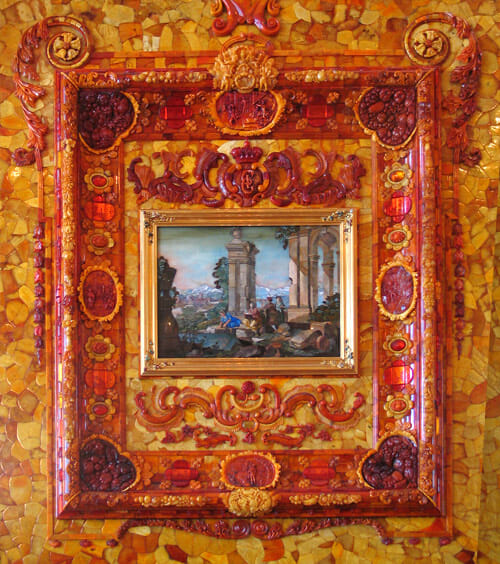
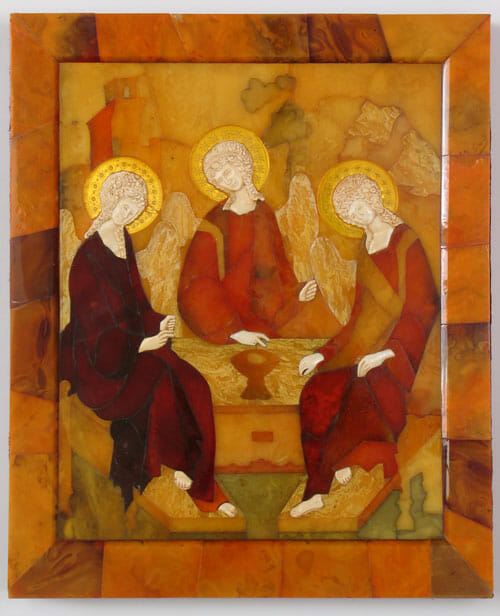
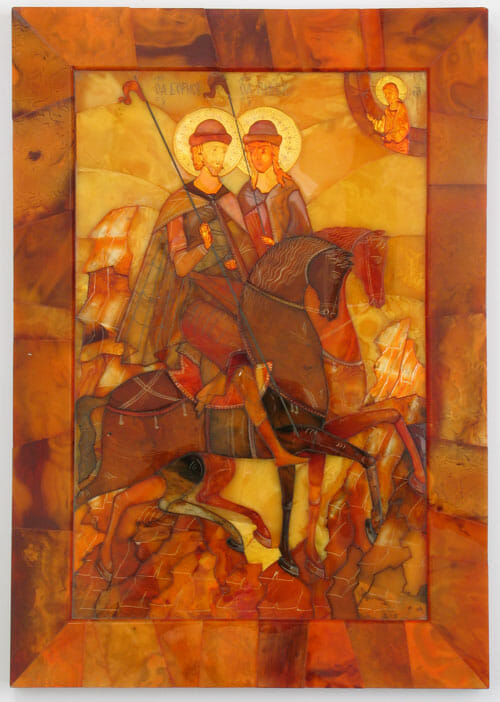
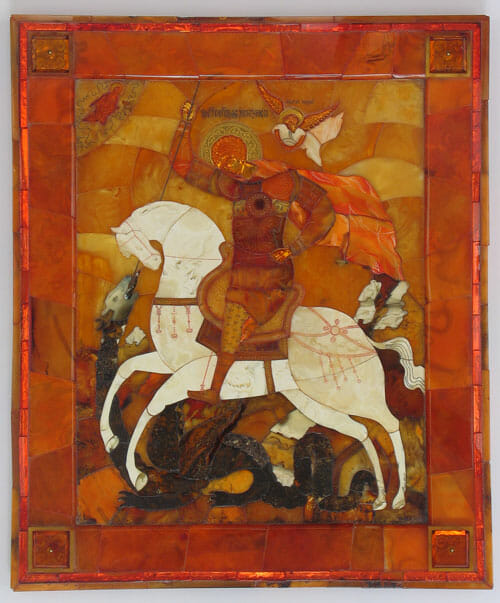
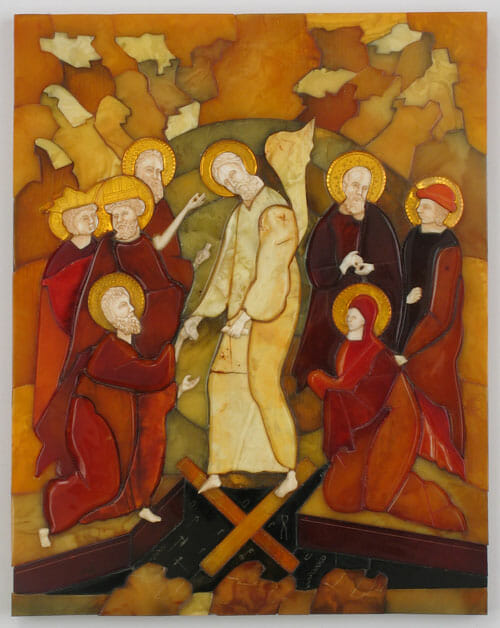
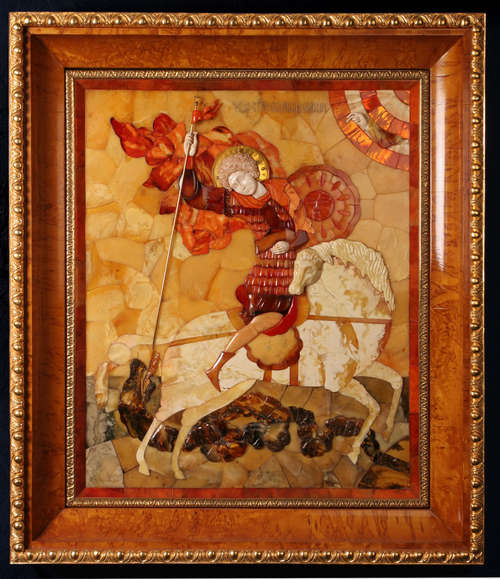
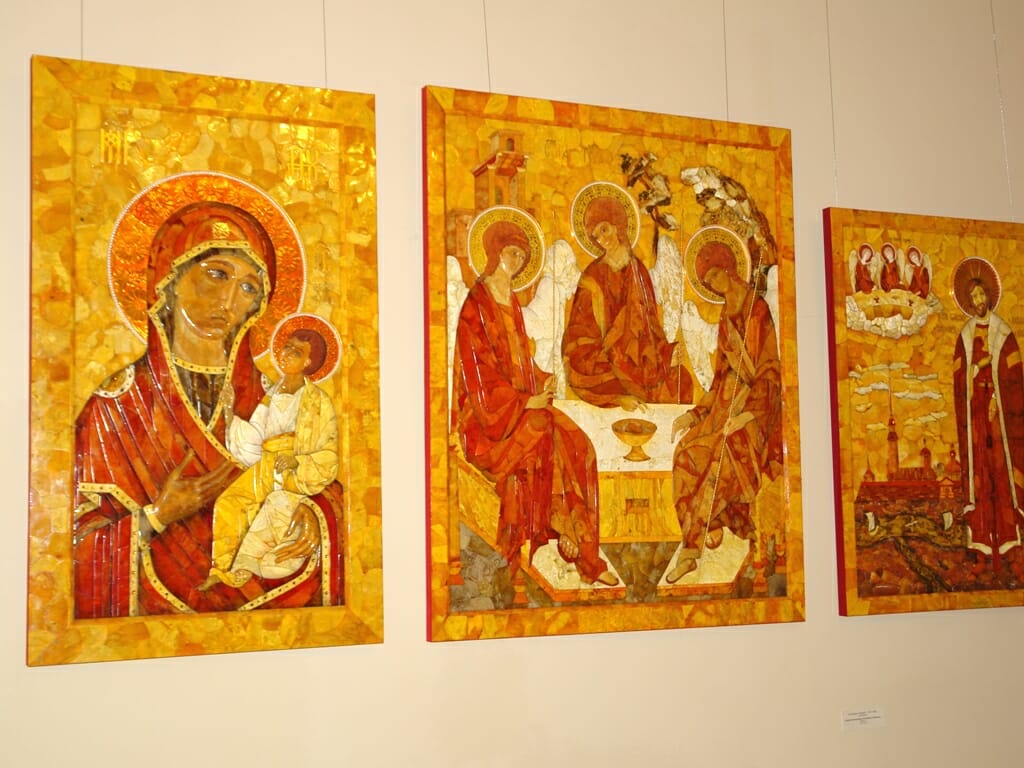
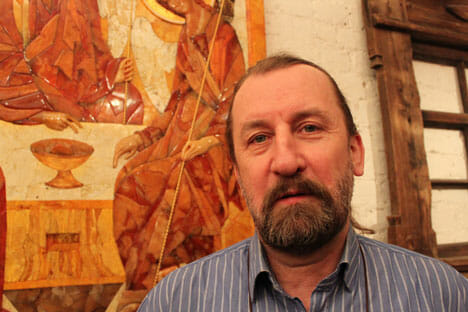
[…] https://orthodoxartsjournal.org/the-amber-icons-of-alexander-krylov/Wednesday, May 29th 8:00 amclick to expand… […]
Amazing and beautiful. Thank you for sharing these!
I find myself returning to look at these amber icons again and again, and my heart tells me that there is something really special and sacred here. I’ve seen the work several artisans who make icons out of non-standard materials (seashells, beads, marble, etc.). This sort of work is always interesting, but I seldom feel that these media offer any real advantage over paint or glass mosaic. But I think these amber icons have an intrinsic beauty that really offers a compelling vision of transfigured reality. The warmth, color, and organic softness of amber is so well suited to showing the uncreated light radiating through living flesh. I might even say that the best icon painters strive to make their painted boards look and feel a bit like amber! I very much look forward to seeing an amber iconostasis one day.
It also strikes me as a wonderfully Russian irony how this amber art came to be where it is today. First, the amber room was the decadent conceit of a German king. Then it was gifted to Russia, and later the Germans stole it back. The loss of the room inspired Russia to build a replica, and now this amber craft is a Russian art rather than a German art. And so it has made it’s way to iconography – a fitting sanctification of an art form with a rough history. As the Russians say, “there is no bad without good”.